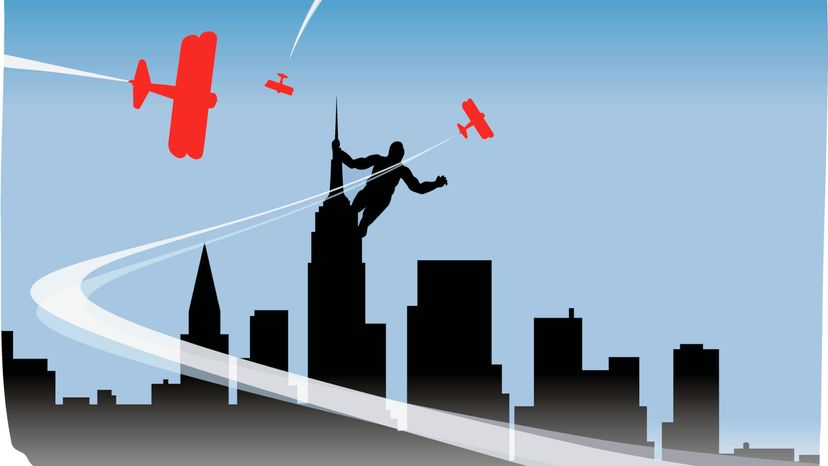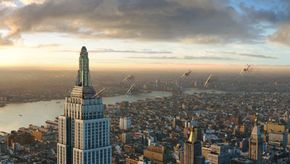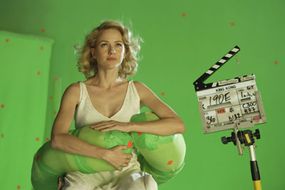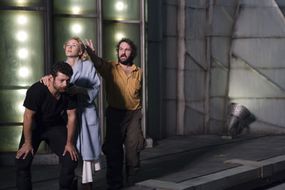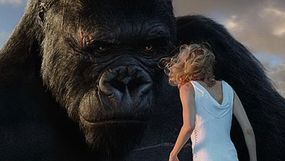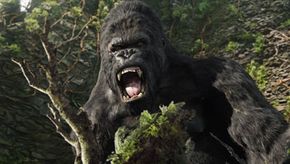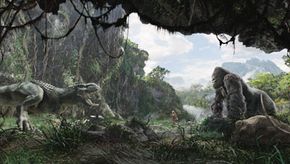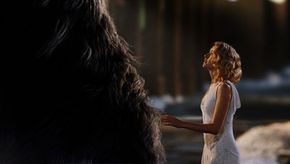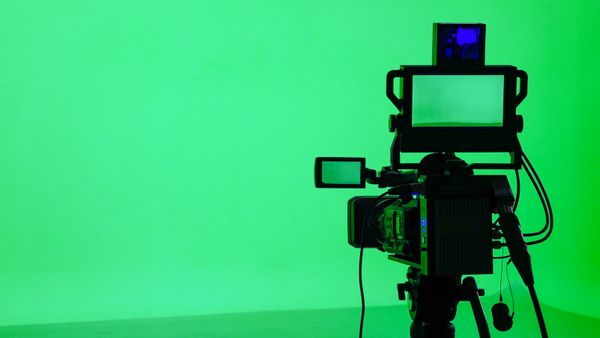Serkis learned to act like a gorilla by studying them in Africa. He studied how they move, how they sit, how they run, how they beat their chests and how they roar. For his performance as King Kong, he wears a simple, blue lycra body suit -- there are no wires or sensors, which makes the suit lightweight so it doesn't hinder his performance. In addition to the suit, he wears arm extensions to make his arms more ape-like.
Once Serkis is in the suit, motion-capture technicians place about 60 optical markers on Andy's body and another couple of dozen on his face. The markers are just tiny plastic balls coated in reflective tape -- they're a lot like the kind of reflectors you stick on a bicycle. Each reflector marks a key position, typically a joint or a particular muscle. Several markers together represent a muscle group or a body segment. Motion-capture is particularly useful in capturing facial mannerisms -- for example, when a person (or a gorilla) looks up or down, it's not just the eyeballs that move. The eyeballs also drag the lids. It's a tiny distortion in the position of the eyelid, but it's essential for realistic-looking eye movement. Serkis' upper and lower eyelids are covered in tiny markers.
To track the movement of all of these reflectors, motion-capture cameras surround the set. There are 52 cameras that track the body markers and another 20 cameras that track the facial markers. Each camera has a bright ring of light immediately around the lens. These rings constantly send out bright light, and the markers reflect that light back to the cameras. In this way, each camera tracks all of the markers it can see at any given time. With all of the cameras feeding their data to the computer, the computer can triangulate the marker positions to create a 3-D "marker cloud" that represents the movement of Serkis' body in physical space.
But we don't want human motion in the scene. We want gorilla motion. This is one of the most difficult aspects of this particular motion-capture process: translating human motion into gorilla motion. There are some serious discrepancies in physical proportions. The software handles a lot of the grunt work in this translation. First, it maps the 3-D marker cloud onto a CG human body. For each part of the CG human body that has a marker on it, the computer determines a corresponding point on a CG gorilla body. The software translates Serkis' motion into the gorilla's motion as he is performing the scene. The end result is a real-time gorilla performance on the computer screen. Just like with a live-action performance, they shoot the scene until they get it right.
Before each motion-capture scene goes to the animation department, technicians edit the footage. Editing Serkis' performance entails tightening up the motion and doing touch-ups to make it feel more gorilla-like. This may mean lowering the brow to achieve a more angry appearance, adding transitions between facial expressions where Serkis momentarily rested his face or extending the swing of an arm where the cameras didn't capture the full motion.
A completed motion capture scene is only one step in developing King Kong as he appears in the film. When Peter Jackson approves a final motion-capture scene, it goes to the animators.
